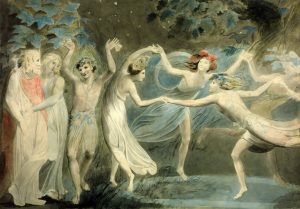Interweaving the Backgrounds of the Party
After you have carefully examined each character’s background, you can then interweave the elements—naturally drawing some characters together or spawning organic conflict between others. When two or more characters have elements in common, you have a plotline that involves the entire party.
Let me give you an example from my last Eberron campaign. It was a somewhat standard find-the-items-to-save-the-world sort of game. I went into the campaign with the idea of having a githyanki incursion at some point, and only the items the PCs were searching for could stop it.
From the character backgrounds I knew the following….
Lyzenna (female elf thief): After the death of her brother, she was trying to prove herself to her father.
Norek (male dwarf fighter): He was searching for an ancient relic of his family to restore his clan’s honor.
Theo (male human monk): He was led by dreams from his enlightened master to bring balance to the world.
Royce (female human druid): She was trying to find the source of strange mutations appearing in nature.
I won’t go into all of the interweaving I did, because it was extensive. But just when dealing with the main idea of the campaign, I looked for ways to link each character to the gith in some fashion.
Lyzenna’s father turned out to be the main guy working with the gith. This set daughter against father.
Theo’s master was a githzerai opposing the githyanki, so that roped him in.
Royce discovered that the gith planar portals were mutating the local wildlife.
That was three characters linked. You’ll notice I didn’t mention the dwarf fighter. That player wasn’t really interested in exploring his character’s background; he just wanted to kill stuff. There’s one in every bunch! So I made one of the items they needed to stop the gith into the family relic the dwarf fighter was searching for. It made for a great dramatic confrontation when he wouldn’t give it up.
Now, keep in mind, I didn’t decide on any of this at the start of the campaign. Each link evolved naturally during the course of the five years we played this game. For example, I decided that Lyzenna’s father was evil when the PCs visited his home area and I needed a foe to oppose them in an Olympic-like contest. After I decided that the father was evil, it was very easy to link him to the gith. I wasn’t planning on this turn of events (actually, I was thinking more about a tearful father-daughter reunion), but I was always on the lookout for opportunities to tie characters to the looming invasion plotline. Playing it a bit by ear kept me from railroading the players and spawned a great campaign.
Mining character backgrounds is really the best way I know to emotionally link the players to the campaign and, if they care what’s going on, their characters will care too.
Next Time: Character Arcs—How do you change your characters over the course of a campaign?


Great advice. Looking forward to the next installment.
These are a great series. I love getting people thinking about their backgrounds more; it’s like a gateway to sandboxery.
-Ben.
I agree with Ben. These articles are a great foundation for creating a campaign that grows and flourishes on it’s own.